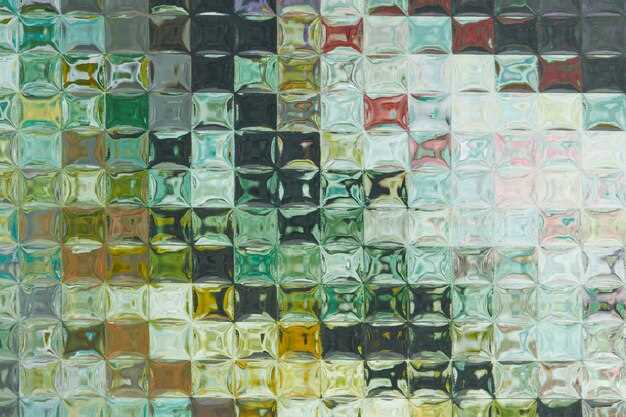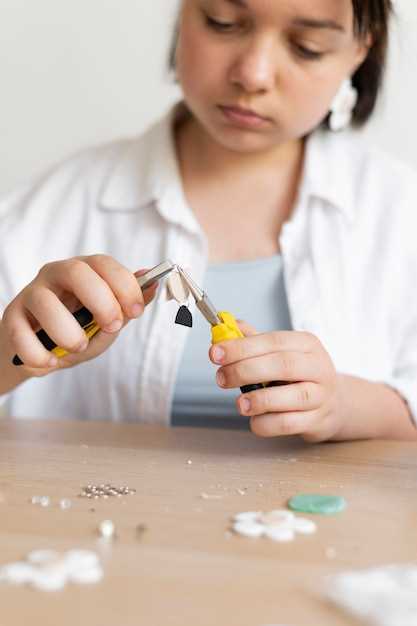In the world of vibrant compositions, there exists a captivating method that allows individual pieces to merge into breathtaking designs. Artists around the globe have embraced this form of expression, utilizing an array of materials to form intricate patterns that mesmerize and inspire. Every shard contributes to a larger narrative, and every arrangement holds a story waiting to be unveiled. Those who venture into this craft discover endless possibilities, from simple patterns to complex masterpieces.
Imagine a canvas made not of paint, but of color-rich fragments meticulously arranged to create visual enchantment. Each piece, whether small or large, is chosen with care, reflective of the artist’s vision and intent. It’s a dance of creativity and patience as one piece finds its rightful place among the others, forming harmony in chaos. The process invites exploration; every design can be tailored to fit personal style, making it a truly individual journey.
With the right tools and a sprinkle of imagination, anyone can embark on this fulfilling adventure. This creative practice offers not only a therapeutic escape but also a way to produce unique decor that captures attention. The magic lies in decisions–choosing colors, shapes, and textures that resonate. As layers build, the vision becomes clearer, and the excitement of discovering the final result grows.
In the upcoming sections, we will unravel the intricacies and share insightful strategies to enhance your technique. Get ready to delve into this alluring realm and transform imagination into reality. The possibilities are endless; let’s begin exploring this fascinating craft together.
Glass Mosaics: Your Ultimate Step-by-Step Guide

Exploring the vibrant world of fragmented pieces can be exhilarating. Each tiny shard contributes to a larger picture. With the right techniques and materials, you can transform simple items into captivating compositions. This journey invites creativity and innovation, allowing your imagination to take the lead.
Before diving into this fascinating practice, it’s essential to gather your supplies. Pay attention to the details. Consider the colors, shapes, and textures of your chosen components. You may want to include:
- Adhesives suitable for various surfaces
- A sturdy backing board
- Protective equipment such as gloves and goggles
- Tools for cutting and shaping
- Sealants to finish
After assembling your materials, begin by conceptualizing your design. Sketching ideas helps to visualize the end result. Experiment with different layouts before committing to a final arrangement. This stage is all about freedom and exploration.
- Prepare the base by ensuring it’s clean and dry.
- Arrange the pieces without glue to finalize your pattern.
- Carefully apply adhesive, working on small sections at a time.
- Allow adequate time for the adhesive to cure.
- Seal the entire piece to protect it from wear and tear.
Assembling a beautiful display is not just a technical task; it’s a celebration of vision. Engaging with colors and forms can evoke emotions. Each piece tells a story, weaving a narrative through composition. Embrace the process, let your creativity flourish, and watch as your skills develop over time.
Understanding the Basics of Mosaic Art

The beauty of mosaic composition lies in its intriguing simplicity. This form of expression captures attention and ignites imagination. Each piece contributes to a larger picture, highlighting the harmony of colors and shapes. It tells a story without words. Transforming ordinary materials into visually captivating designs invites creativity.
At its core, this craft can be understood as a method of assembling individual elements into a cohesive whole. The versatility is astounding. You can explore various materials, sizes, and styles, each adding unique textures and depth. Whether with stone, ceramics, or other types of materials, the art form can adapt to any setting.
Familiarity with foundational techniques can significantly enhance your skills. Learning how to cut and arrange components effectively sets the groundwork for memorable projects. Proper adhesive use is crucial; it ensures each piece remains securely attached. Understanding spacing and grout application will elevate the overall finish.
Ultimately, the essence of this creative pursuit is about exploration and personal expression. Embrace experimentation as you navigate through different combinations and arrangements, allowing for surprises and new insights along the way. The journey itself can lead to delightful discoveries, making it as rewarding as the final masterpiece.
History and Evolution of Mosaic Art
Mosaic artistry has roots that stretch deep into the annals of time, reflecting the cultures and values of societies across different epochs. This technique, which transforms fragments into harmonious designs, has seen countless iterations and interpretations. Early expressions captured the essence of daily life, mythology, and spirituality. Each period brought its unique flair and thematic focus, showcasing the evolution of human creativity.
Initially, the use of small stones or colored tiles was predominant in ancient civilizations. These fragments were painstakingly arranged to create striking images and patterns. Over centuries, artisans embraced various materials, changing the very landscape of this craft. The skillful placement of tiny pieces allowed for storytelling in a visual language that transcended words.
An important milestone occurred in the Byzantine era, where intricate religious scenes became prevalent, reflecting prevailing spiritual themes. This period also saw the rise of advanced techniques, enhancing the depth and intensity of the compositions. As time advanced, the Renaissance period introduced a wave of innovations. Artists began blending science and aesthetics, employing perspective and chiaroscuro effects in their works.
Later movements, including the Art Nouveau and modern styles, offered fresh perspectives, redefining traditional practices. Contemporary creators have adopted newer materials and approaches, combining age-old methods with current trends. This fusion of past and present continues to inspire, inviting new generations to explore the endless possibilities of this fascinating craft.
The journey of mosaic artistry illustrates a rich tapestry of human expression, one that consistently evolves while honoring its profound historical roots. It invites those involved to not only participate in an ancient tradition but also to contribute to its dynamic future.
Types of Glass Used in Mosaics
When it comes to crafting intricate patterns and designs, the choice of material is crucial. Various kinds contribute unique properties and aesthetics. The selection can greatly impact the overall look and feel of the composition. Understanding these options can inspire creativity and help you make informed decisions.
One popular variety is the stained variant. It comes in a myriad of colors and adds depth. Its translucence allows light to filter through beautifully. Another option is the iridescent type, which creates a mesmerizing play of colors that shifts depending on the angle of view. These options invite you to explore endless possibilities.
There are also tumbled pieces, which offer a more natural, textured appearance. Smoothed edges give a softer feel, perfect for organic themes. The clarity and brilliance of clear segments allow for unique layering techniques. In contrast, frosted selections provide a cloudy look that diffuses light gracefully. Each type harmonizes with different styles.
Moreover, specialty glasses like millefiori and dichroic can add an exceptional touch. Millefiori features colorful patterns, while dichroic glass displays different colors when viewed from various angles, creating stunning visual effects. When combined thoughtfully, these diverse materials enable artisans to weave intricate narratives within their works, enriching the viewer’s experience.
Essential Tools and Materials Needed
To embark on your crafting journey, it’s crucial to gather the necessary supplies. The right equipment can significantly enhance your experience and results. With a few essentials in hand, you will find the process more enjoyable and effective. Selecting quality items is just as important as understanding their functions.
The first category includes cutting tools, which are vital for precise shaping. Adhesives play a crucial role in assembling pieces seamlessly. Protective gear ensures your safety while working. Other materials, such as a sturdy workspace, are equally significant.
In addition to these basics, planning your layout ahead of time can save effort later on. Being organized allows for a smoother workflow and reduces waste. Knowledge of various materials can assist you in creating diverse patterns. A few extra items might also elevate projects to new heights, making the endeavor even more rewarding.
| Tool/Material | Description |
|---|---|
| Cutting Tool | Essential for shaping pieces accurately. |
| Adhesive | Used for bonding elements together reliably. |
| Safety Gear | Protects against potential hazards during crafting. |
| Workspace | A sturdy surface to facilitate your project. |
| Grout | Fills gaps between items for a cohesive finish. |
Techniques for Cutting Glass Tiles
Cutting tiles is both an art and a science. Many methods can be employed depending on the desired shapes and sizes. Each technique offers unique benefits and challenges. Mastering these approaches enhances the overall experience and results in sophisticated pieces.
First, there’s the scoring method. This involves scoring the surface with a sharp tool. After scoring, a gentle pressure is applied to break the tile along the line. It’s fast and effective, perfect for simple cuts. Another technique is the use of diamond blades for more intricate designs.
This tool allows for precision cuts, often yielding cleaner edges. For complex patterns, a wet saw proves invaluable. The water helps cool the blade and prevent chipping. Many artists prefer this method for larger projects.
Moreover, employing a glass cutter can provide versatility for various shapes. For angles, the use of a 90-degree cutter can ensure accuracy. Techniques like nibbling assist in achieving detailed cuts in challenging areas.
By exploring and practicing different strategies, one can elevate their skills significantly. Familiarity with each approach allows for better execution and creativity. Ultimately, the choice of method depends on personal preference and the specific requirements of the project.
Create Your Own Glass Mosaic Masterpiece

This section will inspire you to embark on a creative journey. Crafting unique designs brings joy and satisfaction. Engaging in this artistic endeavor allows for personal expression. Each piece is a chance to explore colors and patterns. With a little guidance, anyone can transform simple materials into breathtaking creations.
Before diving into the process, gather your supplies. Here’s a quick checklist:
- Materials: tiles, adhesive, and a sturdy surface.
- Tools: cutters, nippers, and safety goggles.
- Design ideas: sketches or reference images for inspiration.
Preparation is essential. Choose a theme that resonates with you. Consider colors that evoke emotion and patterns that delight the eye. Once your concept is clear, it’s time to start assembling.
- Begin by laying out your design without adhesive.
- Cut tiles into desired shapes using nippers.
- Apply adhesive to the base and place tiles according to your layout.
- Allow it to dry thoroughly, following the manufacturer’s instructions.
- Once set, apply grout to fill gaps and enhance durability.
The final stages involve cleaning and revealing the magnificence of your creation. After the grout has dried, use a damp cloth to wipe away excess. Then, step back and admire the masterpiece you have crafted with your own hands; it’s not just an object but a reflection of your creativity and passion.
Choosing the Right Design and Colors
When embarking on a new project, the right choice of design and colors can make all the difference. It’s a bit like choosing the perfect outfit; everything needs to complement each other. Selection should reflect your personality while harmonizing with the intended space. Think about the emotions you want to evoke. Do you prefer warmth or coolness? Consider the overall atmosphere you wish to achieve.
Patterns can serve as guiding principles in this creative journey. You might lean towards abstract forms or something more traditional. In short, it’s about what resonates with you. The emotional response is key. Once you have a vision, the details will start to fall into place.
Colors can create moods. For example, vibrant hues exude energy while muted tones offer tranquility. With a well-thought-out palette, you can enhance the aesthetics significantly. It’s not just about aesthetics, though; your selection can impact the surrounding environment.
Taking the time to explore different combinations can unveil unexpected delights. While it may initially seem overwhelming, experimenting with various shades and designs can lead to unique discoveries. Keep in mind the space’s lighting and how it interacts with your chosen materials. Every detail counts! The journey from a mere idea to a finished project can be incredibly rewarding when each choice aligns with your vision.
Preparing Your Workspace and Surface
Establishing an effective environment is key to successful project execution. A well-organized area can enhance creativity and efficiency. The choice of surface is equally important. Both aspects help facilitate a smooth process.
First, clear the area of any distractions. Remove unnecessary items and dust to start fresh. Ensure good lighting to avoid eye strain. Having the right tools within reach is essential.
Next, choose a sturdy, flat surface to work on. A dedicated table can provide enough space for your materials. Cover it with protective layers to avoid scratches or damage. It’s wise to use a non-slip mat to maintain stability.
| Essential Tools | Purpose |
|---|---|
| Cutter | For shaping materials with precision |
| Glue | To hold pieces together securely |
| Grout | To fill gaps and enhance durability |
| Safety goggles | For protection against sharp edges |
Finally, ensure a comfortable atmosphere where you can focus. Play soft music if it helps you concentrate. Organizing materials in bins can streamline accessibility. With this setup, you are now ready to undertake the upcoming project.
Step-by-Step Assembly Process
Assembling a beautiful composition requires patience and precision. Each piece plays a vital role in the overall design. The process may seem daunting at first. However, breaking it down into manageable tasks makes it enjoyable. You’ll find satisfaction in witnessing your vision come together.
The following guide will walk you through the necessary stages, ensuring that you achieve a remarkable outcome.
- Gather your materials: Collect all tools and supplies you will need.
- Prepare your workspace: Ensure it’s clean and well-lit for optimal focus.
- Choose a design: Sketch out your ideas on paper for better visualization.
- Cut your pieces: Use appropriate methods to shape them accurately.
- Arrange the layout: Experiment with the positioning before fixing anything down.
- Adhere the pieces: Apply your chosen adhesive carefully, section by section.
- Grout the spaces: Fill in the gaps when everything is secure, smoothing the surface.
- Clean and polish: Remove any excess material, revealing the stunning patterns.
By carefully following these stages, along with your unique style and personal flair, the final creation will not only reflect your efforts but also resonate with your creative spirit. Remember to embrace any challenges along the way, as they can lead to unexpected inspirations and delightful surprises in your finished project.
Video:
Create a Unique Glass Mosaic – Crafts – Guidecentral
Create a Unique Glass Mosaic – Crafts – Guidecentral by Guidecentral English 15,712 views 9 years ago 1 minute, 33 seconds
Q&A:
What materials do I need to start making glass mosaics?
To create beautiful glass mosaics, you’ll need a variety of materials. Start with colored glass pieces, either pre-cut or DIY from old glass dishes or mirrors. You will also need a base for your mosaic, like plywood or a canvas board. A strong adhesive, such as thin-set mortar or craft glue, is essential for securing the glass to the base. Additionally, you’ll require tools like nippers for cutting glass, a safety glass cutter, and grout to fill the spaces between your glass pieces. Don’t forget safety gear like gloves and goggles to protect yourself while working!
Can beginners really create stunning glass mosaics, or is it too advanced for them?
Absolutely! Beginners can create stunning glass mosaics with the right approach and tools. The beauty of mosaic art lies in its versatility; you can start with simple designs to build your confidence. Following a step-by-step guide can simplify the process. As you gain more experience, you can experiment with complex patterns and techniques. The key is to practice, be patient, and have fun with your creativity. Remember, the end result is uniquely yours, regardless of skill level!
What techniques can I use to create different textures in my glass mosaic?
Creating different textures in your glass mosaic adds depth and visual interest to your artwork. One technique involves mixing various types of glass—such as iridescent, frosted, and flat glass pieces—to create a dynamic surface. You can also layer pieces at different heights to add dimension; for example, using 3D elements like glass beads or tiles. Another method involves playing with the arrangement of the glass—overlapping or angling pieces can create shadow effects. Experimenting with these techniques will help you discover your unique style!
How do I properly grout my glass mosaic, and what should I keep in mind during this process?
Grouting is a critical step in finishing your glass mosaic. After the adhesive has dried, mix your grout according to the package instructions. Ensure that your workspace is clean and covered with plastic to avoid any mess. Use a grout float or rubber spatula to spread the grout over the mosaic, making sure to fill all the gaps between the glass pieces. Wipe away excess grout with a damp sponge, but be careful not to pull grout out of the seams. After the grout has set for about 30 minutes, you can polish the glass surface with a clean cloth. Remember to allow the grout to cure fully as recommended before displaying your artwork!
What are some common mistakes to avoid when creating glass mosaics?
When starting with glass mosaics, there are several common mistakes to be aware of. One frequent error is using the wrong adhesive; ensure you choose one specifically designed for glass. Another mistake is not planning your design in advance. Sketching out your design can help you visualize the final product and make the assembly easier. Avoid overcrowding the glass pieces, which can lead to a chaotic appearance—leave space for your grout and create a balanced layout. Finally, don’t rush through the drying and curing stages; patience will result in a more durable and beautiful piece. Learning from these pitfalls will enhance your skills and enjoyment of the craft!
What materials do I need to get started with glass mosaics?
To get started with glass mosaics, you will need a variety of materials. Essential supplies include glass tiles or shards, adhesive (like tile adhesive or PVA glue), grout, a sturdy base (such as wood, board, or a rear glass panel), cutting tools (for glass, like a glass cutter or mosaic nippers), a sponge, and a sealant for finishing. Additionally, you may want to have protective equipment like safety goggles and gloves. It’s also helpful to have design templates and a workspace free of clutter for your projects.



